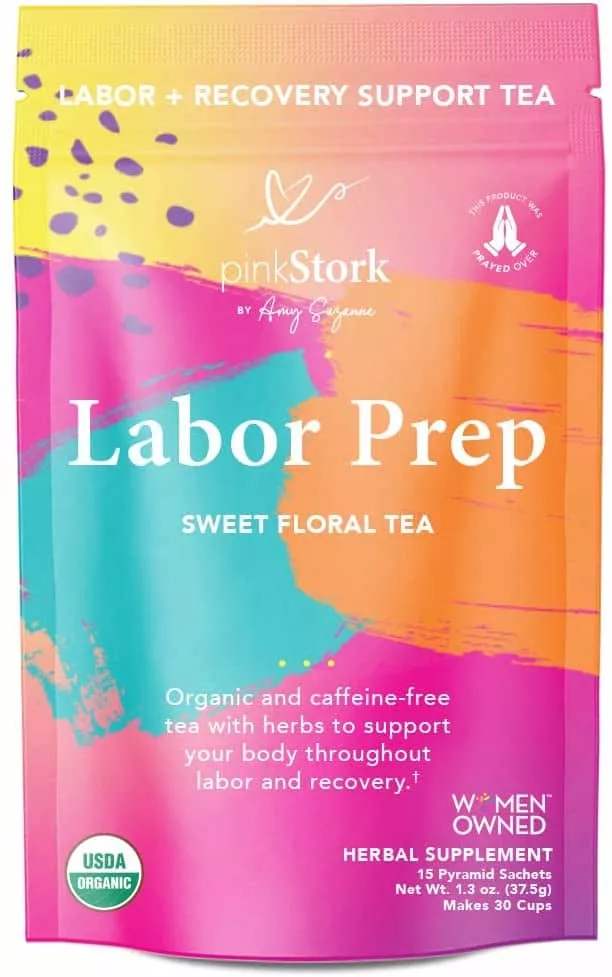
We’ve all heard the incredible accounts of women who were blessed with a short labor (I personally know a woman who only had to push for 5 minutes!). But many of us have also heard accounts on the opposite spectrum–mothers in labor for 24 hours or more–and it sounds scary.
While all of us are created differently, there are things you can do to prep your body and promote a speedy, smooth labor naturally.
Walking
One of the most important things you can do during your pregnancy is to stay active. I’ve heard it time and time again that being stationary during pregnancy can not only prolong your baby’s due date, but also make pushing out the baby harder than it has to be.
Performing light exercises on a daily basis like walking, helps your little one get in position for labor. Closer to your due date, the pressure the baby puts on your cervix will help to thin it out and cause dilation before labor starts.
Staying active during labor also helps shorten labor time. If you’re able to walk or move around you should do this, and take time to rest if needed.
Red Raspberry Leaf Tea
Red raspberry leaf tea is known as “the woman’s herb,” and for a good reason. Red raspberry leaf contains a plant compound called fragarine, which is said to tone and tighten muscles in the pelvic area such as the walls of the uterus, thus promoting an easier delivery.
A study conducted of 108 women showed that drinking the tea resulted in a shorter first stage of labor. Not only that, but it has been shown to decrease the need for medical intervention during birth as well.
The herb is considered to be safe for most women, but it’s always recommended to check with your doctor before making changes to your diet. Optimal consumption is said to be 1-2 cups of tea daily starting at 32 weeks of pregnancy. We loved Pink Stork’s Labor Prep Tea!
Squatting
Squatting is an excellent exercise to include in your work out routine during pregnancy. During labor and delivery, squatting may also help by opening the pelvis and helping the baby descend through the birth canal. One source however states that if you’re doing squats during labor, it is best practiced starting the second stage or else it could actually prolong your labor time.
As with any exercise, call your doctor if you experience pain or discomfort.
Peanut ball
Most of us have heard of a typical birth ball, but a peanut ball is used a little bit differently. It’s a double birth ball joined in the center, giving it the shape of a peanut. The peanut ball helps put the hips in the optimal birthing position while opening up the pelvis to speed up labor. It’s used mainly in women who are unable to move around during labor, but it can be used as well in intervals while you take a rest.
Studies have shown that women who use the peanut ball experience lower c-section rates and shorter labor times.
Suggested use for the peanut ball is to lie on your side, leaning slightly forward, with your leg placed over the ball. The unique shape of the peanut ball stimulates a partial “squat” position by widening the pelvis.
For other ways to use the ball, you can check out the images below:

© Maternal Focus https://www.maternalfocus.com
If you choose to use the peanut ball, make sure it isn’t too big–otherwise it might be uncomfortable and ineffective. The recommended size to use for labor is either 45 cm or 55 cm.
While peanut balls have been helpful for many women, all of our birth situations are unique, so make sure you explain to your healthcare team what the peanut ball is and how it’s used before labor. This way your care team can let you know if the ball will pose any kind of interference with the birth of your baby.
Birthing Pools
The American College of Obstetricians and Gynecologists says birthing pools can help during the first stage of labor to promote a shorter labor time as well as lower the need for an epidural.
How they work is the mother will get in a tub of water for the early stage of labor and get out for delivery, although some women choose to stay and give birth in the pool.
Little research has been done on water births, but some studies suggest it could pose risks during delivery. If you’re considering a water birth, make sure you speak to your doctor beforehand to discuss all the benefits and risks.
Hopefully these methods will be a help to you as you deliver your precious gift. If you have other natural methods that helped with a previous delivery, make sure to let us know in the comments below!
Sources:
https://www.uofmhealth.org/health-library/zx3441
https://www.healthline.com/nutrition/red-raspberry-leaf-tea
https://www.healthline.com/health/pregnancy/squats

Hi I’m Jolie! I am a wife and stay at home “momprenuer.” I love writing about topics that encourage other women and add value to their lives. You can find me over at TheVirtualMama.com where I teach moms how to work from home, and my Christ-centered blog JolieJHarris.com!










